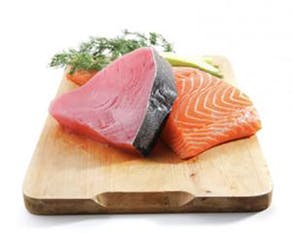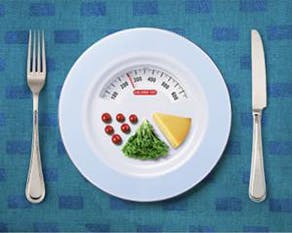How to Keep Your Bones Healthy and Strong
HEALTH & WELLNESS
02.01.2016
.jpg?auto=format)
I have to be honest: I’ve never really worried about my bones—until just recently, when my mother was diagnosed with full-blown osteoporosis. We’ve all heard of it, but this disease—where bones become weak and more likely to break—runs in families (why I’m worried about my bones now). But while osteoporosis is more common in women, men can get it, too—why everyone should be vigilant about keeping their bones healthy and strong. In fact, according to the National Institutes of Health, more than 40 million people in the United States have osteoporosis—or are at high risk of the disease.
It makes you ask: what’s going on?
Calcium is key—as is vitamin D. (Calcium helps build and maintain bones, while vitamin D helps your body effectively absorb calcium.) How much do you need?
For calcium:
√ If you’re 19 to 50 years, you need: 1,000 milligrams a day.1
√ If you’re 51 to 70+, you need 1,200 milligrams a day (for women) and 1,000 milligrams a day (for men) .1
You can get calcium through your diet (dairy is a good source) and vitamin D through sunlight. It’s important to supplement with a good multivitamin as well to help ensure you’re getting enough, particularly when it comes to vitamin D (sitting in the sunlight isn’t good for anyone’s skin).*
The other part of the equation
There’s another part of the bone health puzzle—and that’s strength training. The fact that most people don’t strength train in the United States, particularly as we get older, may be one reason we have so many bone-health problems in this country.
How it works: strength training—or weight-bearing exercise—stresses your bones (in a good way) and by doing so, increases bone density. How? Cells called osteoblasts are critical to maintaining your bone structure; when you do weight-bearing exercise, the osteoblasts lay down new bone tissue to strengthen the points where the bone is stressed. Do regular strength training (for different parts of the body), and the osteoblasts continue to reinforce the bone, over and over again.
Easy ways to add strength training2 to your routine:
— Walking vests: These adjustable weighted vests can be worn daily to transform your daily walks into strength-training ones.
— Do body weight exercises: Push-ups are the easiest exercises to do. You need no equipment and can do them anywhere. Other good options include squats (for your legs) and crunches (for your abs).
— Try resistance tubing: These stretchy, lightweight pieces of latex provide resistance (and strength training) when stretched. (Tip: the lighter the color of the tubing, the less resistance it offers.) You can do a variety of moves with these—anywhere (since they’re so portable).
— Do free weights (or try the weight machines at the gym): Dumbbells are effective strength training tools. You can do everything from biceps curls (to strengthen the arms) and shoulder raises (to strengthen the shoulders) to weighted squats (to help strengthen muscle—and bone—in the legs). Weight machines at the gymare a bit more advanced way to build bone; book an appointment with a trainer to learn how to use them.
To get started, make sure you warm up for 5 to 10 minutes beforehand (to warm up the muscle, helping to prevent injury). And choose a weight or resistance level that will tire your muscles after 12 repetitions. (When you can do more than 15 reps without tiring, increase the amount of weight or resistance.) And plan to do two to three, 20- to 30-minute sessions a week.
Bottom line: strength training just seems intimidating. Doing it—along with getting enough calcium and vitamin D—will help support your bones for years to come.
1 According to the National Institutes of Health
(http://www.niams.nih.gov/Health_Info/Bone/Bone_Health/Nutrition/)
2 Be sure to check with your doctor before starting any exercise program.
Image Credits: wavebreakmedia/Shutterstock.com
Recommended Articles
The 5 Best Foods That Will Help Supercharge Your Brain
Amidst our busy schedule, it's important to retain our focus and memory. Resting alone is not...
Iron deficiency is a lot more common than you would think. A recent survey by SATA CommHealth(i...
Mars vs Venus: Understanding the His and Hers of Nutritional Needs
Mars vs Venus: Understanding the His and Hers of Nutritional Gaps Although their DNAs are...






